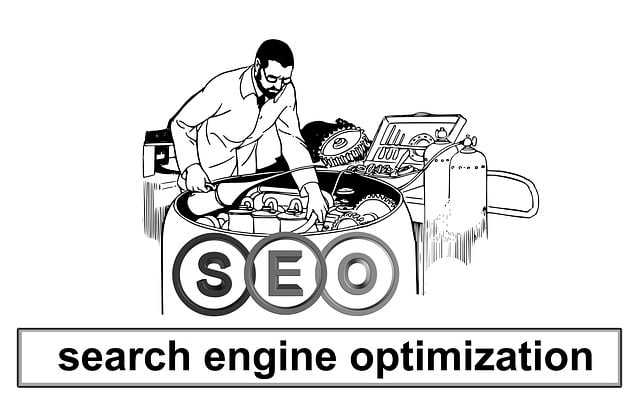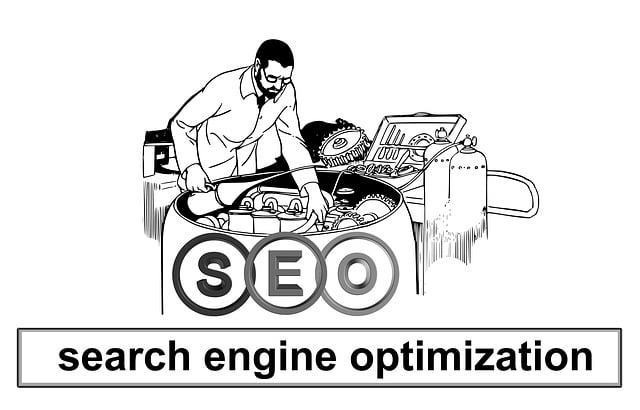Beginner SEO Training involves multiple steps: keyword research to understand user search behavior and identify relevant keywords; on-page optimization to refine web pages for higher rankings; off-page SEO to build a robust backlink profile and attract natural backlinks; tracking website traffic using tools like Google Analytics; mastering KPIs and leveraging tracking tools; optimizing content for engaging, structured readability; prioritizing user experience with site speed and mobile responsiveness; and building quality backlinks from reputable sources.
“Unleash your potential in the digital realm with our comprehensive guide to SEO basics, tailored for aspiring marketers and beginners. This article serves as an ultimate beginner SEO training manual, covering essential strategies to boost online visibility. From unraveling the art of keyword research to mastering on-page optimization and delving into off-page techniques, each section equips you with actionable insights. Learn how website traffic analysis and tracking tools can optimize your content for a superior user experience, while also exploring effective backlink-building methods.”
Understanding Keyword Research for SEO

Keyword research is a fundamental aspect of Beginner SEO Training, serving as the cornerstone for optimizing your online content. It involves understanding user search behavior and identifying relevant keywords that potential customers use when searching for products or services similar to yours. By conducting thorough keyword research, you can uncover valuable insights into what your target audience is looking for and how best to tailor your website’s content to meet their needs.
This process begins with brainstorming a list of words and phrases related to your business, then using specialized tools to analyze search volumes, competition levels, and user intent. Tools like Google Keyword Planner or SEMrush can help you discover long-tail keywords—more specific and less competitive terms that often convert better. Incorporating these keywords strategically into your website’s metadata, headings, content, and URL structure enhances its visibility in search engine results, thereby driving more organic traffic.
On-Page Optimization Techniques Explained

On-Page optimization is a crucial aspect of Beginner SEO Training, focusing on enhancing individual web pages to rank higher in search engine results. It involves various techniques that directly impact how search engines interpret and understand your website content. One fundamental technique is keyword research and implementation. Identifying relevant keywords related to your niche and strategically placing them within your page’s title, headings, meta descriptions, and content helps search algorithms grasp the topic and context of your webpage.
Another essential on-page optimization strategy is optimizing titles and headings (H1, H2, etc.). Crafting compelling and descriptive titles that accurately represent the content provides a clear signal to both users and search engines about what the page is about. Additionally, structuring content with well-formatted headings improves readability and aids search engine crawlers in understanding the hierarchy of information on your pages.
Off-Page SEO Strategies: A Beginner's Guide

Off-Page SEO is an essential strategy for any beginner in SEO training, as it involves optimizing your online presence beyond your website. This includes building a strong backlink profile, which acts as a vote of confidence from other websites to yours. Start by identifying reputable and relevant sites in your industry or niche. Guest blogging on these sites, creating high-quality infographics, or offering valuable resources can help attract natural backlinks.
Social media is another powerful tool for Off-Page SEO. Actively engaging with influencers and industry leaders on platforms like Twitter, LinkedIn, and Facebook can lead to mentions, shares, and links back to your site. Remember, quality content is key; create something so compelling that people naturally want to share it, driving organic traffic and improving your search rankings over time.
Analyzing Website Traffic and Its Impact

Understanding website traffic is a crucial step in any Beginner SEO Training journey. By analyzing the data, you gain insights into user behavior, preferences, and how they interact with your site. Tools like Google Analytics offer valuable metrics such as page views, bounce rate, and average session duration, enabling you to identify high-performing pages and areas needing improvement. This knowledge is pivotal in optimizing content and structure for better search engine rankings.
Website traffic analysis directly impacts SEO strategies. For instance, if a particular blog post consistently draws high organic traffic, it indicates successful keyword targeting. Conversely, low engagement on another page might suggest the need to refine content or target different keywords. Regular traffic audits help keep your online presence relevant and aligned with search engine trends, ensuring continuous improvement in search rankings.
Essential Tools for SEO Performance Tracking

For any Beginner SEO Training, understanding key performance indicators (KPIs) and tracking them effectively is essential. Tools like Google Analytics and Search Console are fundamental for monitoring website traffic, user behaviour, and search engine rankings. These platforms provide valuable insights into keyword performance, organic reach, click-through rates, bounce rates, and more. By regularly reviewing these metrics, marketers can identify trends, measure the success of SEO strategies, and make data-driven decisions to optimise their content for better search engine visibility.
Additionally, many third-party SEO tools have emerged to enhance tracking capabilities. These include keyword research tools like SEMrush or Ahrefs, which offer in-depth analysis of search terms, competition levels, and potential opportunities. Other useful tools are site audit software for technical SEO checks and backlink analysers to assess link profiles. Integrating these essential tools into a comprehensive Beginner SEO Training curriculum equips students with the skills to navigate the complex landscape of online visibility effectively.
Optimizing Content for User Experience

Optimizing content for user experience is a key aspect of beginner SEO training. It involves crafting text that’s not only informative and engaging but also structured in a way that makes it easy to read and navigate. This includes using headings, subheadings, bullet points, and short paragraphs to break up content into digestible chunks. Additionally, incorporating relevant images, infographics, or videos can enhance visual appeal while improving overall accessibility for users with different learning styles or disabilities.
User experience also encompasses site speed and mobile responsiveness. Search engines prioritize websites that load quickly and display optimally on all devices. Optimizing images, minifying code, leveraging browser caching, and using content delivery networks (CDNs) are some techniques to improve page speed. Ensuring your website is mobile-friendly not only enhances user experience but also boosts your search engine rankings.
Building Quality Backlinks: Tips and Tricks

Building quality backlinks is a crucial aspect of Beginner SEO Training, as it significantly boosts your website’s authority and search rankings. Start by identifying relevant, high-quality websites in your niche. Engage with their content, leaving thoughtful comments and sharing valuable insights – this increases your visibility and may encourage them to link back to your site. Guest blogging is another effective strategy: contribute valuable articles to popular blogs in your industry, including a natural backlink to your own site.
Remember that not all backlinks are equal; focus on acquiring links from reputable, relevant sources. Avoid spammy practices or buying links, as this can lead to penalties from search engines. Instead, prioritize building genuine relationships and creating content that naturally attracts backlinks. This organic approach ensures long-term success and enhances your site’s online reputation.
